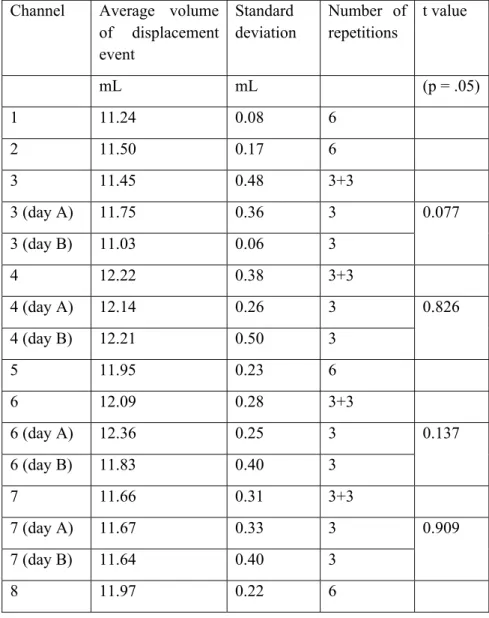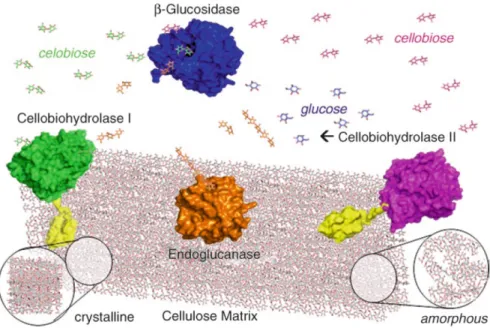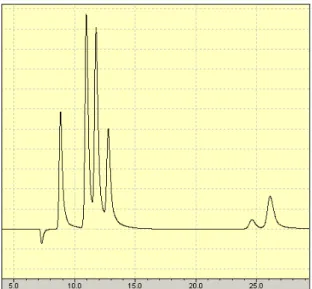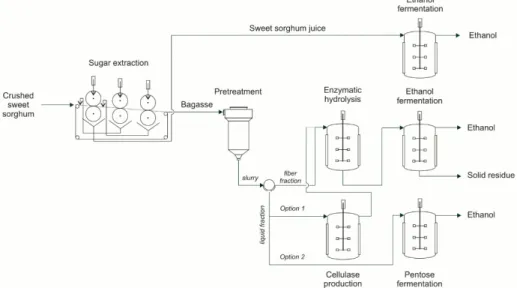Side stream pre-treatment is the liquid fraction that results after separation from the pre-treated biomass slurry. Cellulase production using different streams of wheat grain and wheat straw based ethanol processes. 2010) Relevance of the light signaling machinery for cellulase expression in Trichoderma reesei (Hypocrea jecorina). Applicability of bioethanol production technologies to the complex use of the sweet sorghum variety 'Monori Édes'.
INTRODUCTION
Process design of the biomass-to-ethanol process (Gírio et al., 2010) SHF: separate hydrolysis (of cellulose) and fermentation (of glucose). SHCF: separate hydrolysis and co-fermentation (of pentoses and hexoses) SSF: simultaneous saccharification and fermentation (of glucose). The aim of the work was to prove the feasibility of ethanol production based on Hungarian sweet sorghum varieties.
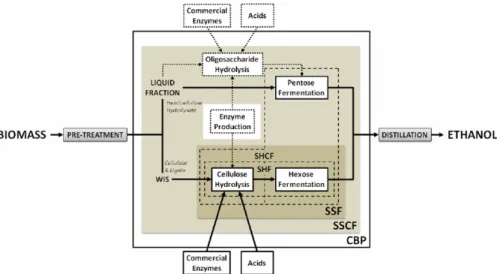
BACKGROUND
Overview of ethanol production
- Structure of lignocellulosic biomass
- Sweet sorghum – a candidate for sustainable bioethanol plant
- Wheat grain and straw
In some cases, however, hemicellulose can even constitute up to 50% of the cell wall (Gírio et al., 2010). In softwood species, mannan-based hemicelluloses (glucomannans and galactoglucomannans) are dominant (Gírio et al., 2010). Main types of hemicellulose polymers, adapted from Gírio et al., 2010. amount, % of DM) Backbone Side.
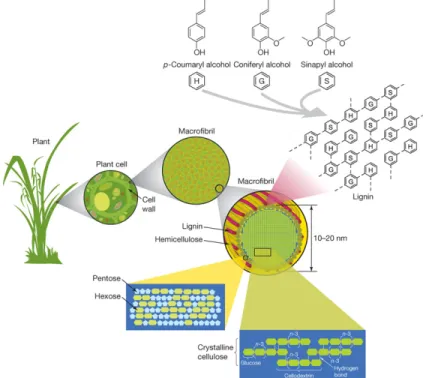
Pretreatment and utilization of pretreated materials
- Possible utilizations of the liquid fraction
- Properties of the liquid fraction
- Detoxification methods
- Microbial strategies to overcome inhibition
Partial hydrolysis and solubilization of the hemicellulose fraction takes place (Jorgensen et al., 2007), and therefore these substances remain in liquid. Due to the complex effect of pretreatment and the variable background matrix of raw material and liquid fraction, many degradation products cannot be accurately identified (Tomás-Pejó et al., 2011). It was found that it may be the major substance in the liquid fraction that causes inhibition, as the concentration in LHW-pretreated biomass (up to 24 mM) is much higher than that required for severe inhibition in yeast (1-10 mM ) (Jayakody et al. ., 2011).
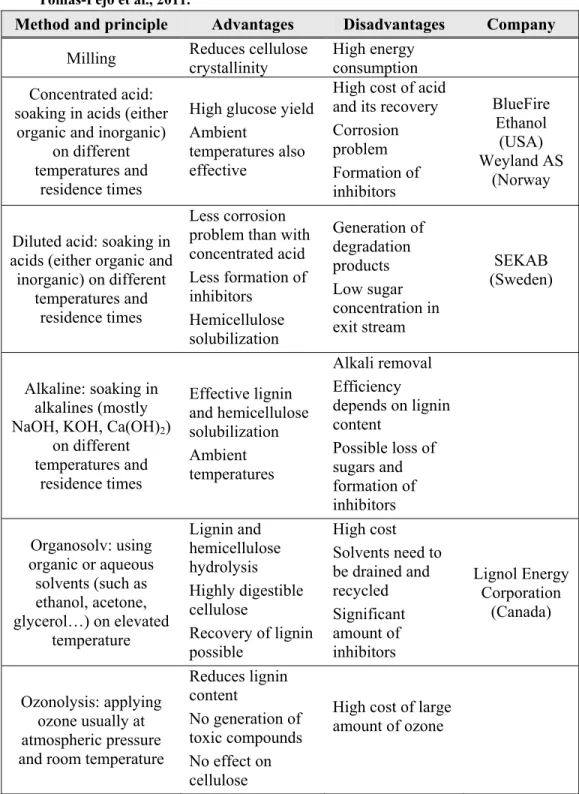
Enzymes for biomass conversion
- A prolific enzyme producer: T. reesei
- Cellulase enzyme system of T. reesei
- Cultivation conditions of T. reesei
- Novel approaches for further development of T. reesei
Aerobes usually secrete a large amount of various enzymes into the environment (Lynd et al., 2002). Over time, the costs of cellulases have decreased significantly, but they are still one of the barriers to industrial scale expansion (Geddes et al., 2011). The next step in strain improvement was to take advantage of genome sequencing (Baker et al., 2008).
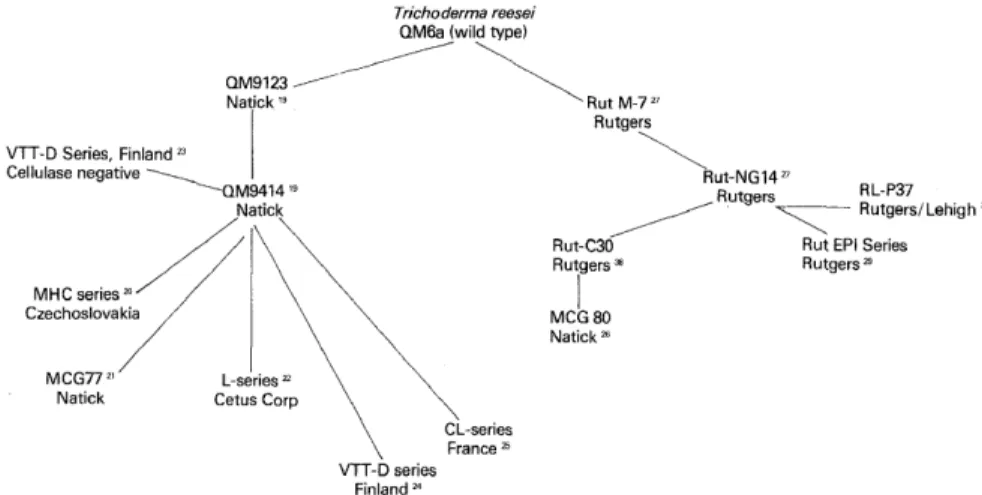
MATERIALS AND METHODS
- Raw materials
- Sweet sorghum varieties
- Wheat grain and straw
- Other raw materials used
- Pretreatments
- Microbial strains
- Cellulase production
- Inoculum preparations
- Fermenter experiments
- Pre-adaptation of T. reesei to liquid fraction
- Enzyme production on liquid fraction in shake flasks
- Hydrolyses
- Hydrolysis of pretreated washed sweet sorghum bagasse
- Hydrolysis of pretreated washed wheat straw
- Ethanol fermentation
- Other methods
- Detoxification
- Western blotting
- Analyses
- Composition analyses
- Enzyme activity assays
- Calculations
Hydrolysis experiments were performed with the enzymes prepared on the liquid fraction of pretreated wheat straw with different supplements (Paper IV). In the case of the experiments performed for Paper IV, liquid fraction of pretreated wheat straw was detoxified in a two-step process. The inhibitor content in the liquid fraction of Paper III was also measured with this system.
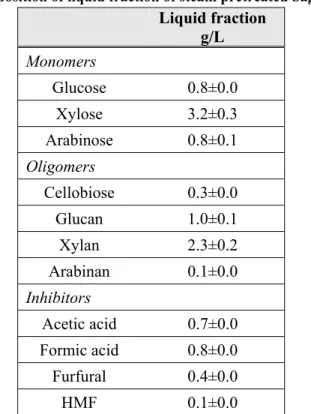
RESULTS AND DISCUSSION
A novel device for tracking ethanol fermentation (Paper I)
- Description of the system and principle of operation
- Evaluation of the results
This structure of the U-tube and thus the operating principle was originally described by Veiga et al. 1990) to measure the amount of biogas in aerobic digestion. First, the size was reduced, resulting in discharge events with volumes around 12 ml instead of the 50 ml as described by Veiga et al. The principle of operation is the following: the produced CO2 enters both legs of the tube and leaves the other, while the same amount of liquid as its own moves through the legs.
The gas leaves the tube in fixed steps through an inverted siphon (transfer tube) placed between the two legs of the U-tube. The event volume is calculated from the volume of water transferred measured with a measuring cylinder divided by the number of displacement events (mL/event). Since the event volume is of crucial importance for reliable results, the reliability and repeatability of the calibration method was investigated.
Based on statistical evaluation, the repeated measurements of the same sample on different days and channels were shown to yield results with a standard deviation of 116.2 ml (equivalent to 10 displacements or 0.23 g ethanol). VCO2 is the total volume of gas produced during the measurement, - 10-6 is a factor to convert ml to m3. To estimate the error due to this simplification, the hypothesis of error propagation was tested with possible maximum deviations from the standard conditions under the conditions of the experiments (15 hPa and 3°C).
This dependence of the bias on the glucose concentration (i.e. on the volume produced) was also confirmed by plotting the residuals.
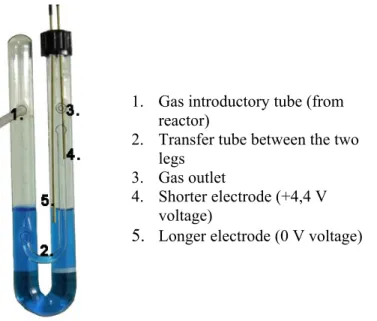
Utilization of whole sweet sorghum plant ‘Monori Édes’ for ethanol
- Fermentation of the juice
- Different alkali pretreatments of bagasse
- Enzymatic hydrolysis and fermentation of pretreated bagasse samples 51
- Adaptation of T. reesei to liquid fraction of pretreated sweet sorghum
- Cellulase production and use of produced enzymes in a wheat straw
The liquid fraction of the steam pretreatment was chosen because it is an unavoidable by-product in the process. The liquid fraction of the steam pretreatment was used for cellulase production according to option 1 in Figure 8. Therefore, it was hypothesized that adaptation could be a good strategy to partially overcome the inhibitory effect of the liquid fraction.
Adaptability, expressed as growth rate (mm2/day), also decreased with increasing proportion of the liquid fraction (Figure 12). These media contained the liquid fraction in a ratio corresponding to the dilution in a given plate (Table 14). In preliminary experiments, it was found that the liquid fraction of wheat straw pretreated with steam was too toxic to T.
This again indicates the effect of interactions and other potential inhibitors present in the liquid fraction. Enzyme production was observed only when the liquid fraction was diluted to 1:3. Neither aliphatic acids nor other inhibitors could be detected in broth containing detoxified liquid fraction at 1:3 dilution.
Xylanase activities were found to be significantly higher in broth containing the liquid fraction than in the reference.
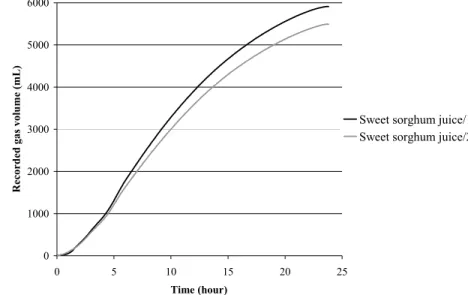
Utilization of strains created by novel approach in up-scaled cellulase
- Main results of fermenter cultivations
- Specific activities
- Comparison of the effects of deletions on the level of transcription and
The observed very significant improvement of EGA production suggests that the increase of FPA in cases of Δenv1 and Δblr2 is only partially due to increased expression of the cellobiohydrolase, but appears to be mainly due to an improved overall efficiency of the endoglucanase mixture secreted (and in the case of Δblr2, BGA can also contribute greatly). On the other hand, it also suggests that although induction of env1 transcription is abolished with deletion of blr1 or blr2 (Castellanos et al., 2010), the consequences of deletion of env1 are not similar to those of deletion of these photoreceptors. Therefore, in contrast to Δblr2, the enzyme mixture secreted by Δenv1 appears to be more efficient than that of the other strains investigated in this study.
Light-dependent regulation of the proportions of the respective enzymes may be one way to achieve this. For Δenv1 the effect was less clear, suggesting that the improvement in cellulase mixing found for this strain is likely caused by altered expression regulation of the group of enzymes that contribute to cellulose degradation. Considering the transcriptional data for cbh1 in these strains (Castellanos et al., 2010) this higher efficiency confirmed in both pre-shake flasks and ferment cultures was surprising.
In contrast to cbh1/cel7a transcription, which is reduced in blr1 and blr2 deletion mutants (Castellanos et al., 2010), cellulase activities secreted by the respective strains during submerged fermentations nevertheless increased or at least remained at wild-type levels in the case of Δblr1. Signals derived from various environmental stimuli (sulfur metabolism (Gremel et al., 2008) as well as heterotrimeric G-protein signaling (Schmoll et al., 2009; Seibel et al., 2009)) have been found to influence transcription. cellulase gene. in a light-dependent manner. Therefore, the importance of signals transmitted by G-proteins, as well as the sulfur signal, must depend on the light status, which is sensed and transmitted by BLR1 and BLR2 photoreceptors ( Castellanos et al., 2010 ).
The fact that these proteins and their orthologs regulate multiple targets (Rosales-Saavedra et al., 2006, Schuster et al., 2007, Chen et al., 2009) supports this hypothesis.
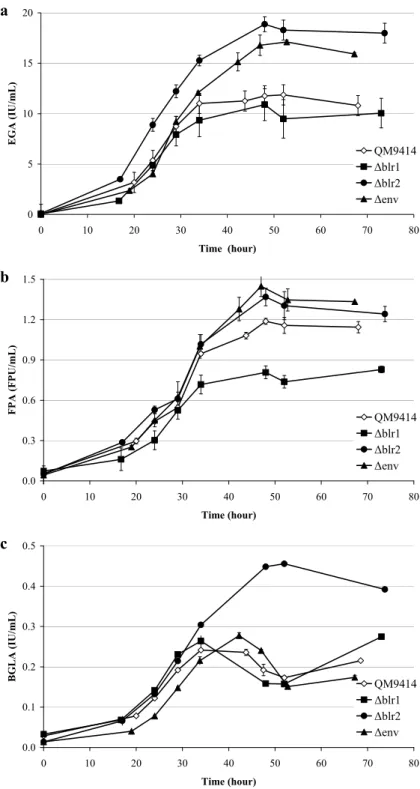
SUMMARY
New scientific findings
Based on the final gas volume, ethanol concentration can be estimated, but a growing difference appeared with the increase of the total gas volume. Dilute alkali pretreatment of sweet sorghum bagasse is an efficient method, taking into account both the hydrolysis by means of RS release and the whole SSF process as described by ethanol yield. Diluted and detoxified liquid fraction of steam-pretreated wheat straw is an appropriate carbon source for T.
Besides availability, the main advantage of using the liquid fraction is the greatly enhanced xylanase activity produced by T. Starch, as an additional carbon source for the liquid fraction (from steam-pretreated wheat straw) can significantly improve beta-glucosidase production, thereby increasing the composition is optimized from enzyme mixture (close to a BGA/FPA ratio of 1), but supplementation cannot facilitate overcoming the inhibition. While deletion of blr2 resulted in a significantly increased amount of total protein secreted, deletion of env1 leads to the secretion of a more efficient enzyme mixture.
In the initial stage, the volume of gas produced is proportional to the glucose concentration. The effect of acetic acid, one of the compounds present in the liquid fraction, on the production of cellulase by T. In the water-liquid fraction mixture, the dilution of the liquid fraction was 2 or 4 (1:1 or 1:3 liquid fraction:water ratio ).
9% and 46% of the hexoses and pentoses, respectively, were solubilized and were present in the liquid fraction after pretreatment. In the case of 1:1 dilution of the liquid fraction (50%), the growth rate was behind that of the reference and the 1:3 dilution. The difference from reference grew with decreasing dilution of the liquid fraction in the inoculum: on day 2 in broth of No.
Under these conditions, most of the xylan content in the wheat straw was dissolved (Table 1). A portion of the suspension was vacuum filtered to separate water insoluble solids and the liquid fraction. Therefore, in the subsequent parts of the study, the detoxified liquid fraction was used in a 1:3 dilution with tap water.
In the case of this dilution, the initial acetic acid concentration of the treated liquid fraction was 3.1 g/l in the culture broths. This event occurred simultaneously in the media containing the liquid fraction, regardless of the additional carbon source. Other activities of the culture broths (supernatants) in the 20 FPU volume are shown in Table 6.
